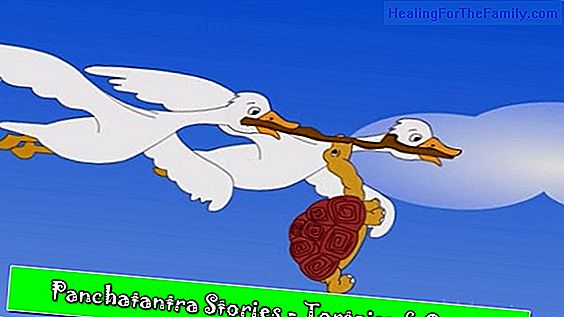Non-verbal learning disorder in children
We can think that we do not stop labeling children, it is ADHD, it is dyslexic, it has a language disorder ... but labels are sometimes useful, if we use them correctly. If it helps me to give the child what he needs, it's good. A disorder that is little talked about and many parents and educators i
We can think that we do not stop labeling children, it is ADHD, it is dyslexic, it has a language disorder ... but labels are sometimes useful, if we use them correctly. If it helps me to give the child what he needs, it's good.
A disorder that is little talked about and many parents and educators is practically unknown is the so-calledNon-verbal learning disorder in children or TANV.
TANV is a neurodevelopmental disorder that mainly affects the children's motor and social perceptual areas, while the verbal area is well developed (even superior). This disorder is related to a deficient functioning of certain right and left areas of the brain.
What difficulties do children with Nonverbal Learning Disorder have?

The difficulties that these children present are related to:
- Psychomotor area.
- Space-perceptual area.
- Social area.
Faced with these difficulties are children who un have an adequate or even better development in the verbal area por, so they do not usually attract attention in school due to learning difficulties, (they are intelligent children, with good ability to learn, good behavior, take the courses ...).Nonverbal Learning Disorder in Children: SymptomsNon-verbal learning disorder in children can be detected by observing the following difficulties: Les - It is difficult for them to face new situations.
- In language and communication they have difficulty understanding the non-verbal keys of the social relationship and communication, so this affects the social area.
Do not understand jokes, or double meanings,
gestures or looks in communication.
- They also have difficulties to understand the contextual keys of conversations or social situations (the pragmatic of the language).-At the motor level they are children that we usually call "clumsy"
, they stumble, they have difficulties in psychomotor coordination, fine motor skills and gross motor control, (they drop the ball from their hands when we throw it, or they fail by kicking it, you stumble easily ...) which makes it difficult to write.
- They also showdifficulties in visual-perceptive tasks and spatial orientation,(which may affect reading, writing and tasks related to artistic education areas).
-Academic difficultiesespecially at the level of oral or written comprehension. Difficulties in reading and writing (slow decoding and coding processes)
Problems of children with non-verbal learning disorder in the classroomThey are children who often go unnoticed or confused with children with attentional problems, even they are usually crossed out of "lazy" or "slow". These children excel in Language, Mathematics, Foreign Language and Science when they are allowed other formats that are not just written.In the classroom you can see that they understand and they know, they have a good language and vocabulary development
, they learn complex contents, and despite their problems with reading and writing, they do not usually have spelling problems. They also have a good capacity for logical verbal reasoning, a good capacity for mental calculation and good auditory memory.
Your weak points in the classroom would be the tasks of spatial orientation, the tasks of writing, drawing, manipulatives, or reading
. Despite their good language development, they usually present difficulties in organizing their discourse, differentiating between important information and non-academic information, (which also affects written expression),In the non-academic,
their difficulties are in the social area and relationship with colleagues, since it is difficult for them to make friends and keep them. So the intervention in this area is fundamental.
Some adaptations that can be made in the classroom with these children are:- Do not copy the statements,since it is an arduous and expensive task for them and it slows them down a lot in their work.
-
Offer visual clues on the sheet(margin lines, scripts to start writing, frame spaces to do operations ...) as well as use notebooks with Montessori or line guidelines.
-Adapt the evaluation, allow them to do oral exams, type test, give them more time, or use the computer for written assignments.
The problem with this disorder is multiple and varied. On the one hand, the lack of knowledge of professionals, there are no unanimous criteria for diagnosis, which implies difficulties in their detection, (they are often confused with Asperger's Syndrome) and if there is no good diagnosis there can not be an adaptation in the classroom.On the other hand it is a disorder that usually goes unnoticed since the language is preserved and with a good level of development, reaching these children, good academic achievements.












